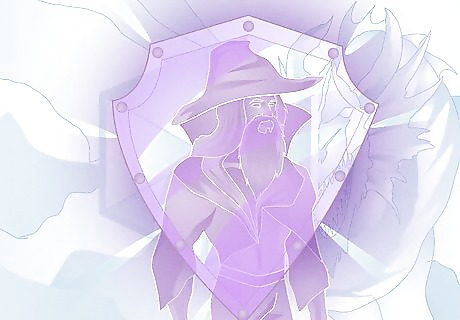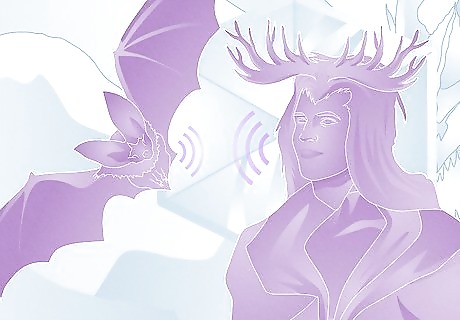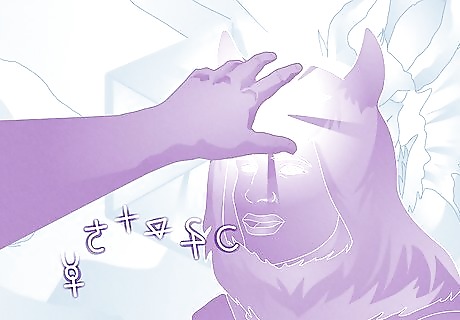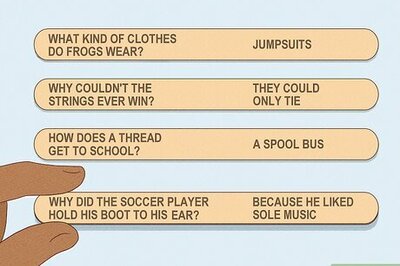
views
- There are 8 schools of magic in Dungeons & Dragons 5e: abjuration, conjuration, divination, enchantment, evocation, illusion, necromancy, and transmutation.
- All magic (and spells) are separated into schools. DMs may need to know each school to help players identify items and magical effects.
- Spellcasters aren’t limited by school, although wizards get benefits for choosing a school and casting its associated spells.
School of Abjuration

Abjuration magic mainly focuses on protection and shielding. Spellcasters who use abjuration magic can counteract destructive or damaging spells, give themselves bonuses to their armor class (making them harder to hit), and make their allies more resistant to harmful magic. Abjurers can also break curses and protect allies from dangerous creatures. Low-level spells: Alarm, Shield, Protection from Evil and Good, Arcane Lock, Dispel Magic, Counterspell, and Glyph of Warding. High-level spells: Banishment, Circle of Power, Greater Restoration, Antimagic Field, Mind Blank, and Invulnerability.
School of Conjuration

Conjuration magic revolves around summoning things. That can include anything from allies (like familiars or summoned animals) to portals to the elements themselves (like a wave of water or a bonfire). In short, conjuration magic can make physical objects and creatures appear and disappear in the blink of an eye! Low-level spells: Mage Hand, Find Familiar, Poison Spray, Ice Knife, Unseen Servant, Flaming Sphere, and Misty Step. High-level spells: Teleportation Circle, Teleport, Infernal Calling, Planar Ally, Heroes’ Feast, Plane Shift, Tsunami, Gate, and Wish. Although it might seem like Banishment (which teleports enemies to a different plane) would be conjuration magic, it’s actually classified as abjuration.
School of Divination

Divination magic reveals knowledge and secrets to the caster. Divination isn’t the flashiest school—but it can be one of the most useful! Spellcasters who want to learn everything they can might use divination magic to understand languages they couldn’t before, identify unknown items, spot hidden creatures, and even spy on targets from miles away by scrying. Low-level spells: Arcane Eye, Comprehend Languages, Detect Magic, Identify, Find Traps, Speak with Animals, Augury, and See Invisibility. High-level spells: Scrying, Locate Creature, Commune, Legend Lore, Find the Path, True Seeing, and Foresight.
School of Enchantment

Enchantment magic involves exerting influence over other creatures. Enchanters can manipulate the minds of their foes, forcing them to tell the truth, act according to the enchanter’s wishes, or even simply fall asleep! Enchantment magic can also grant supernatural powers of persuasion or induce madness, making targeted creatures act in ways they normally wouldn’t. Low-level spells: Sleep, Bane, Bless, Command, Compelled Duel, Crown of Madness, Charm Person, and Hold Person. High-level spells: Confusion, Charm Monster, Hold Monster, Mass Suggestion, Modify Memory, Feeblemind, and Power Word Kill.
School of Evocation

Evocation magic is all about dealing damage with raw magical energy. When you think of classic offensive spells like Fireball and Lightning Bolt, that’s evocation magic. Evocation spells, whether they deal with elements like fire and ice or pure arcane energy, are often designed for one purpose: to destroy everything in their path. However (surprisingly), some evocation spells can heal instead. Low-level spells: Burning Hands, Dancing Lights, Magic Missile, Healing Word, Thunderwave, Moonbeam, Fireball, and Lightning Bolt. High-level spells: Ice Storm, Cone of Cold, Bigby’s Hand, Destructive Wave, Heal, Fire Storm, Prismatic Spray, and Meteor Swarm.
School of Illusion

Illusion magic aims to manipulate and mislead other creatures’ senses. When casting illusion spells, things are never as they seem; you can disguise your character, turn the entire party invisible (to help them sneak through dangerous areas), or force creatures to see things that aren’t really there. You can create hallucinations, dreams, and even nightmares using illusion magic. Low-level spells: Minor Illusion, Disguise Self, Silent Image, Magic Mouth, Blur, Phantasmal Force, Fear, Hypnotic Pattern, and Invisibility. High-level spells: Hallucinatory Terrain, Greater Invisibility, Dream, Seeming, Mental Prison, Project Image, and Weird.
School of Necromancy

Necromancy magic controls the forces of life and death. In D&D 5e, necromancers are sometimes frowned upon (depending on the setting and world your campaign takes place in). Nonetheless, necromancy magic can be powerful—allowing you to raise the undead, deal necrotic damage, heal allies, or even resurrect fallen creatures, bringing them back to life. Low-level spells: Chill Touch, False Life, Ray of Sickness, Gentle Repose, Inflict Wounds, Speak with Dead, Life Transference, and Animate Dead. High-level spells: Blight, Contagion, Raise Dead, Danse Macabre, Circle of Death, Soul Cage, Resurrection, Finger of Death, and True Resurrection. Although necromancy magic deals in manipulating both life and death, not all healing spells are part of the necromancy school (like Cure Wounds, which is evocation).
School of Transmutation

Transmutation magic can change the properties of items and people. Thus, transmutation magic is fairly versatile compared to other schools; in D&D 5e, you can use it to do everything from sending messages to polymorphing into a different form, changing silver into gold, or even flying! Basically, any magical effect that involves turning one thing into another is considered transmutation. Low-level spells: Shape Water, Goodberry, Jump, Barkskin, Feather Fall, Heat Metal, Levitate, Fly, Haste, Slow, Plant Growth, and Gaseous Form. High-level spells: Polymorph, Telekinesis, Disintegrate, Flesh to Stone, Stone Shape, Move Earth, Control Weather, Time Stop, and Etherealness.

















Comments
0 comment